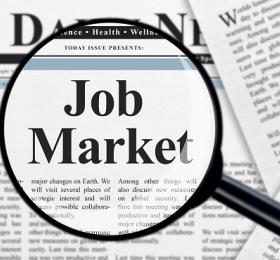
Not too hot, not too cold… just right. American payrolls expanded by 559,000 during May. Unemployment and U6 both declined to 5.8% and 10.2% respectively. Hourly wages increased 0.5% MoM even as the average workweek ticked down a hair to 34.9 hours. After the latest revisions, the rolling 3-month pace of hiring in the US is ~541,000 jobs per month, which isn’t bad. Leisure and hospitality lead the way last month with total payroll expansion of 292,000. Education was another bright spot in May. According to BLS, the US economy created 144,000 new jobs for educators as the reopening process gathers steam. We have been keeping an eye on construction spending lately. Interestingly, construction payrolls declined by 20,000 last month. May figures show the domestic economy is still 225,000 jobs short of pre-pandemic levels in the highly cyclical construction sector. For our purposes, capital expenditures are certainly important to monitor!
Elsewhere, mixed economic signals in May contributed to a flat month for rates and equities. Broad measures of manufacturing and services continue to signal that the economic expansion is fully intact, but consumer data is a bit more uncertain. Retail sales posted 0% growth MoM and new home sales notably declined 5.9% relative to the previous month. Moreover, housing starts declined 9.5% to start Q2. We will need to see how the US consumer fares without the prospect of more government stimulus arriving via snail mail or direct deposit! However, JOLT’s (job openings) continue to increase and sentiment among consumers and small businesses remains resilient. On balance, these are encouraging signs for risk assets.
It’s official… The Fed has begun signaling its much- anticipated retreat from the marketplace. Once the process begins, it will in all likelihood be a well telegraphed, protracted process. On Wednesday, Philly Fed President Patrick Harker discussed the need to identify the conditions under which the Fed could theoretically begin reducing bond purchases. Importantly, he is not a voting member on the FOMC and we are not talking about balance sheet normalization. If the economy continues to improve, we could easily see more language from various Fed governors suggesting the time has come to slow asset purchases. April Fed minutes also suggest a growing number of policymakers are leaning in the direction of “tapering” purchases— this is the dreaded “T” word for many market participants. Of course, if the domestic economy falters for one reason or another, then we can fully expect a recommitted Fed and the balance sheet expansion that will go along with it.
Inflation measures came in quite strong again last month with core CPI and PPI rising 0.9% and 0.7% respectively MoM. Meanwhile, there seems to be a divergence burgeoning regarding inflation expectations in the marketplace. In the near term, expectations for inflation appear to be rising; however, looking further down the road, expectations remain relatively anchored. Lately, downward pressure on the US dollar has been a tailwind for prices in the commodity complex. We continue to see clear signs of strain within the global supply chain— some producers have been able to pass on price increases to end users and some quite simply have not. With all of these factors in play, one would expect some pretty substantial action in rates especially further out on the treasury curve; however, the 10-yr UST finished May a couple of bps south of 1.60%. Not a bad place for borrowers as we kick off the summer months!
Market Outlook: Bearish USD, Neutral Duration, Neutral Equities
News Release: Bureau of Labor Statistics (The Employment Situation- May 2021)